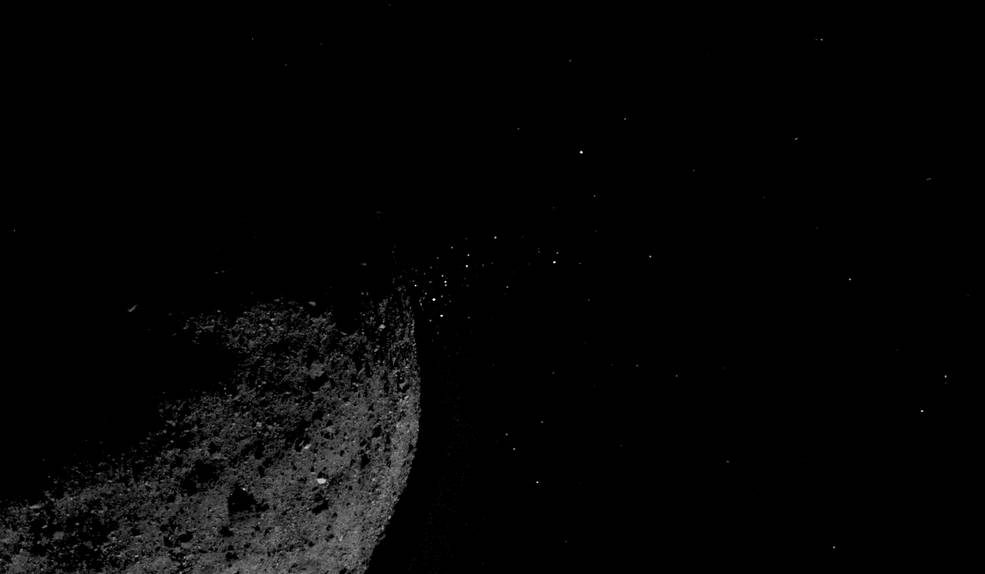Back in 2020, NASA sent a small spacecraft known as OSIRIS-REx to collect samples from the asteroid Bennu. Bennu is one of the most well-known neighboring asteroids to our planet. When OSIRIS-REx went to touch down on Bennu, though, something unexpected happen.
Asteroid Bennu just left NASA scientists reeling
NASA had expected its touch-and-go mission on Bennu to leave the asteroid completely unphased. If anything, a small indent would have been leftover where it touched down. A footprint in the sand, so to speak. However, that isn’t what happened. Instead, when OSIRIS-REx made contact with the asteroid Bennu, pebbles and debris exploded off the surface of the asteroid.
The resulting explosion of debris left scientists baffled when the footage was beamed back to Earth. After all, OSIRIS-REx had come in slowly, touching down on the asteroid carefully. Additionally, many believed that the debris that makes up Bennu was tightly packed.
This should have made the surface more like solid ground. Instead, it seems that the surface of the asteroid Bennu is made of loosely packed debris, more akin to a ball pit that children play in.
Understanding more about the asteroid

While the results of the mission to the asteroid Bennu have been shocking, it did reveal more about the asteroid. Scientists previously believed that cohesion held Bennu’s surface together. Cohesion plays a large role in many things within our universe. It’s what holds particles of wheat and other powders together in clumps. It even holds water together in space.
Instead of cohesion, though, Bennu’s surface appears to be held together by microgravity. In fact, the gravitational pull on Bennu is so low that they estimate it to be less than 100,000th the pull of Earth. For additional context, gravity on the Moon is only 16 percent of that on Earth. So, on Bennu, the pull of gravity would be 16,000 times weaker than that of the Moon.
Using the data that OSIRIS-REx captured, scientists were able to recreate the spacecraft’s descent and sampling of the asteroid Bennu. Upon returning, they found the spacecraft had left behind a massive crater. The touch-and-go mission kicked up so much material, it had fallen into a circular pattern around the crater.
The results of this mission are extraordinary. And they only continue to leave scientists reeling as they work to study the asteroid Bennu more in-depth. Researchers published a paper on the findings in the journal Science Advances this month. This was, of course, just one of many ways that Bennu has defied our expectations.








